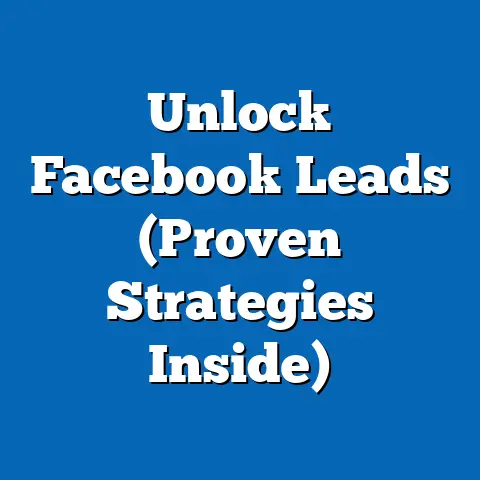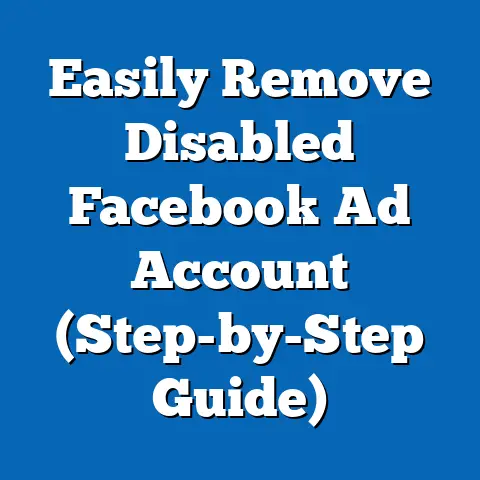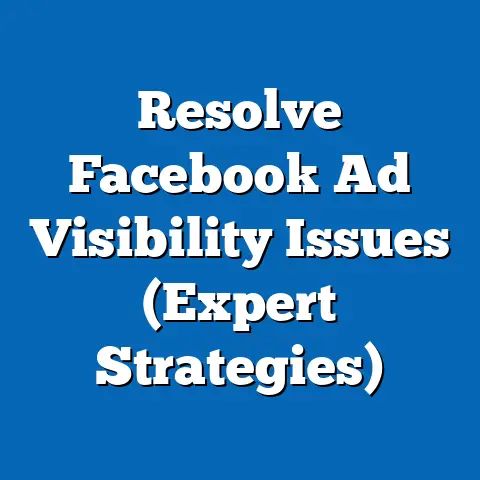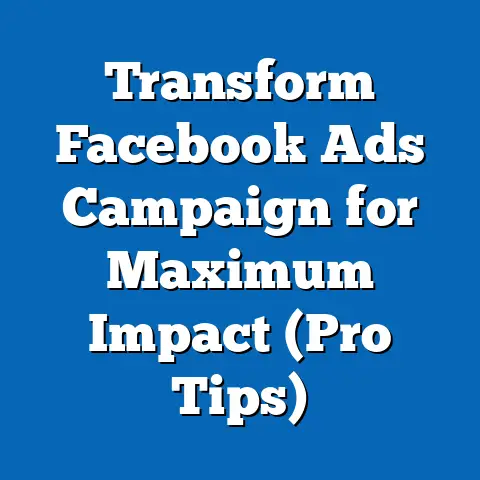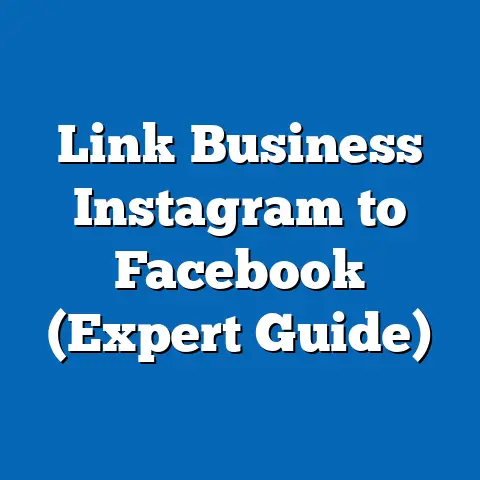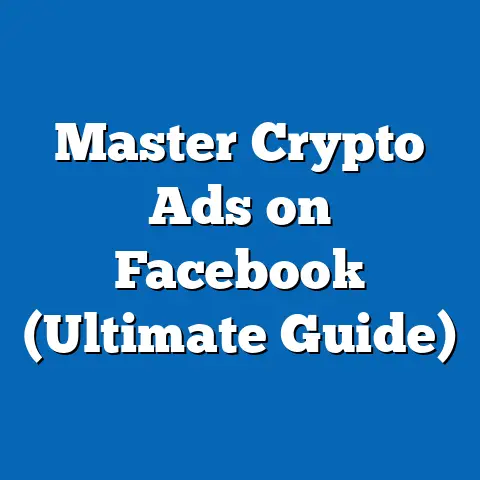Unlocking Scheduled Facebook Ads (Maximize Impact)
Advertising on Facebook is no longer just about getting your name out there; it’s about crafting an experience, a feeling, a desire. For luxury brands, it’s about projecting an image of exclusivity, quality, and aspirational living. Think of it like this: you wouldn’t launch a limited-edition watch at 3 AM on a Tuesday, would you? No, you’d carefully orchestrate a launch event, complete with champagne, influencers, and precisely timed announcements. Similarly, strategic scheduling of your Facebook ads is crucial to maximizing their impact and resonating with your discerning audience.
I’ve seen firsthand how a well-timed ad can make all the difference. I once worked with a high-end jewelry brand struggling to connect with their target demographic online. Their ads were beautiful, but they weren’t getting the engagement they expected. After analyzing their customer data, we discovered that their ideal customers were most active on Facebook during weekday evenings and weekend mornings. By rescheduling their ads to align with these peak engagement times, we saw a significant boost in click-through rates and ultimately, sales.
This article will delve into the art of scheduled Facebook ads, focusing on how luxury brands can leverage this powerful tool to enhance their visibility, engage their audience, and ultimately, drive sales. We’ll explore the importance of timing, the intricacies of Facebook’s scheduling features, the art of crafting luxurious ad content, and the power of data analysis.
Section 1: The Power of Timing in Advertising
In the world of digital advertising, timing is everything. It’s not just about what you say, but when you say it. Imagine a luxury skincare brand promoting a nighttime repair serum. Would it make sense to run those ads primarily during the day? Of course not! You’d want to target your audience when they’re most likely thinking about their evening skincare routine.
Consumer behavior varies drastically throughout the day and week. People check their phones at different times, engage with content differently, and are more receptive to certain messages depending on their current mindset. For luxury brands, understanding these nuances is paramount.
Here are a few key considerations:
- Weekday vs. Weekend: Weekday evenings are often prime time for catching people winding down after work, browsing social media for relaxation. Weekends, on the other hand, might be better for targeting those with more leisure time, perhaps planning their next vacation or considering a luxury purchase.
- Time of Day: Early mornings might be ideal for showcasing premium coffee or breakfast experiences. Midday could be a good time to target professionals during their lunch break with ads for business attire or luxury travel destinations.
- Specific Events: Consider aligning your ads with relevant events. For example, a luxury watch brand might run ads leading up to Father’s Day, or a high-end fashion house might target users interested in upcoming fashion weeks.
Statistics and Case Studies:
Numerous studies have shown the impact of ad scheduling on campaign performance. For instance, a study by HubSpot found that email open rates are highest between 6 AM and 12 PM. While this data is specific to email, it highlights the general principle that timing significantly impacts engagement.
I recall a case study where a luxury car brand saw a 30% increase in lead generation simply by rescheduling their Facebook ads to run during evenings and weekends. They discovered that their target audience, busy professionals, were more likely to browse car options during their downtime. This simple adjustment made a significant difference.
Creating Urgency and Exclusivity:
Luxury brands can also use timely promotions to create a sense of urgency and exclusivity. Consider a limited-time offer on a bespoke handbag, advertised only during a specific weekend. This tactic not only drives sales but also reinforces the brand’s image of exclusivity and desirability.
Key Takeaway: Understanding your audience’s online behavior and tailoring your ad schedule accordingly is crucial for maximizing engagement and driving conversions. Don’t just run ads randomly; strategically plan your timing to align with peak engagement times and relevant events.
Section 2: Understanding Facebook Ads Scheduling Features
Facebook Ads Manager offers a range of features that allow you to precisely schedule your ads, ensuring they reach your target audience at the optimal time. I’ve spent countless hours experimenting with these features, and I can tell you that mastering them is essential for any serious Facebook advertiser, especially those in the luxury space.
Here’s a breakdown of the key scheduling options:
- Setting Start and End Dates: This is the most basic scheduling option, allowing you to define the period during which your ad will run. It’s useful for aligning your ads with specific events or promotional periods.
- Dayparting (Ad Scheduling): This feature allows you to specify the days of the week and times of day when your ads will be shown. This is where you can really fine-tune your schedule to match your audience’s online behavior.
- Lifetime Budget vs. Daily Budget: When using dayparting, it’s important to choose a lifetime budget. This ensures that your budget is evenly distributed across your scheduled time slots. A daily budget, on the other hand, might be exhausted before your prime engagement times.
- Campaign Budget Optimization (CBO): While CBO automates budget allocation across ad sets, it’s still important to consider scheduling. CBO will optimize for the best overall performance, but it might not perfectly align with your desired timing strategy. I often recommend manual bidding and budget control when precise scheduling is crucial, particularly for luxury brands where brand perception is paramount.
Step-by-Step Guide to Scheduling Ads:
- Create Your Ad Campaign: Start by creating a new campaign in Ads Manager and selecting your campaign objective (e.g., Brand Awareness, Traffic, Conversions).
- Define Your Audience: Carefully define your target audience based on demographics, interests, behaviors, and custom audiences.
- Set Your Budget and Schedule: In the “Budget & Schedule” section, choose “Lifetime Budget” if you plan to use dayparting. Then, click on “Show Advanced Options” and select “Run ads on a schedule.”
- Choose Your Time Slots: A grid will appear, allowing you to select the days of the week and times of day when you want your ads to run.
- Create Your Ad: Design your ad creative, write your ad copy, and add your call-to-action.
- Review and Publish: Review your campaign settings and publish your ad.
Tips for Effective Scheduling:
- Test Different Schedules: Don’t be afraid to experiment with different schedules to see what works best for your audience. Use A/B testing to compare the performance of different time slots.
- Consider Time Zones: If you’re targeting a global audience, be mindful of time zone differences. Schedule your ads to align with the local time of your target markets.
- Monitor Performance: Regularly monitor the performance of your scheduled ads and make adjustments as needed. Pay attention to metrics like reach, engagement, and conversions.
Real-World Example:
I worked with a luxury hotel chain that wanted to promote their weekend getaway packages. We used dayparting to schedule their ads to run primarily on Thursday and Friday evenings, targeting users who were likely planning their weekend activities. This strategy resulted in a significant increase in bookings for their weekend packages.
Key Takeaway: Facebook Ads Manager provides powerful scheduling features that allow you to precisely target your audience at the optimal time. By mastering these features, you can ensure that your luxurious messages reach consumers when they are most receptive, maximizing engagement and driving conversions.
Section 3: Crafting Luxurious Ad Content for Scheduled Campaigns
While timing is crucial, it’s equally important to create high-quality content that resonates with affluent consumers. Luxury advertising is about more than just showcasing products; it’s about creating an experience, telling a story, and evoking a feeling of aspiration.
Here are some key elements of luxurious ad content:
- Compelling Visuals: High-quality photography and videography are essential. Invest in professional visuals that showcase your products in their best light. Think stunning landscapes, elegant interiors, and sophisticated models.
- Engaging Copy: Your ad copy should be concise, evocative, and aligned with your brand’s voice. Focus on the benefits of your products, not just the features. Use language that appeals to the emotions and aspirations of your target audience.
- Cohesive Brand Message: Ensure that your ad content is consistent with your overall brand message. Maintain a consistent tone, style, and visual identity across all your ads.
- Storytelling: Luxury brands often excel at storytelling. Use your ads to tell a captivating story about your brand, your products, or your customers. Showcase the history, craftsmanship, and heritage behind your brand.
- Exclusivity and Scarcity: Highlight the exclusivity and scarcity of your products. Use language that suggests limited availability or bespoke craftsmanship.
Examples of Successful Luxury Ad Campaigns:
- Chanel: Chanel’s ads often feature stunning visuals, elegant models, and a minimalist aesthetic. They focus on the timelessness and sophistication of their brand.
- Hermès: Hermès ads often showcase the craftsmanship and heritage behind their products. They tell stories about the artisans who create their iconic handbags and scarves.
- Rolex: Rolex ads often feature successful individuals wearing their watches in aspirational settings. They emphasize the prestige and status associated with the brand.
The Role of Scheduling in Storytelling:
Scheduled ads can be used to tell a captivating story over time. For example, a luxury travel company could run a series of ads showcasing different aspects of a destination, building anticipation and excitement over several weeks.
I once worked with a high-end watch brand that used scheduled ads to launch a new collection. We started with teaser ads that hinted at the new collection, followed by ads that revealed more details, and finally, ads that showcased the entire collection. This gradual reveal created a sense of anticipation and drove significant traffic to their website.
Key Takeaway: High-quality content is essential for luxury advertising. Create compelling visuals, engaging copy, and a cohesive brand message that resonates with affluent consumers. Use scheduled ads to tell a captivating story over time, building anticipation and excitement around your brand.
Section 4: Analyzing the Impact of Scheduled Ads
Once you’ve launched your scheduled ad campaigns, it’s crucial to analyze their performance and make adjustments as needed. Facebook Ads Manager provides a wealth of data that can help you understand how your ads are performing and identify areas for improvement.
Here are some key performance indicators (KPIs) that are relevant to luxury brands:
- Reach: The number of unique people who saw your ad.
- Impressions: The number of times your ad was displayed.
- Engagement Rate: The percentage of people who interacted with your ad (e.g., likes, comments, shares, clicks).
- Click-Through Rate (CTR): The percentage of people who clicked on your ad.
- Conversion Rate: The percentage of people who completed a desired action after clicking on your ad (e.g., made a purchase, filled out a form).
- Return on Ad Spend (ROAS): The amount of revenue generated for every dollar spent on advertising.
- Cost Per Acquisition (CPA): The cost of acquiring a new customer.
Using Facebook Analytics:
Facebook Analytics provides even more detailed insights into your audience’s behavior. You can track how users interact with your website or app after clicking on your ad, giving you a more complete picture of the customer journey.
Interpreting Data:
- Low Engagement Rate: If your engagement rate is low, it could indicate that your ad creative or copy is not resonating with your audience. Try experimenting with different visuals, headlines, and calls-to-action.
- Low Click-Through Rate: If your CTR is low, it could mean that your ad is not relevant to your target audience. Refine your targeting criteria to ensure that you’re reaching the right people.
- Low Conversion Rate: If your conversion rate is low, it could indicate that there’s a problem with your landing page or website. Ensure that your landing page is optimized for conversions and that it provides a seamless user experience.
- High CPA: If your CPA is high, it could mean that you’re not targeting the right audience or that your ad campaign is not efficient. Try adjusting your bidding strategy or refining your targeting criteria.
Adjusting Strategies Based on Insights:
I remember working with a luxury fashion brand that was struggling with a high CPA. After analyzing their data, we discovered that their ads were performing well during the week but poorly on weekends. We decided to pause their ads on weekends and focus their budget on weekdays. This simple adjustment resulted in a significant decrease in their CPA.
Key Takeaway: Data analysis is crucial for optimizing your scheduled ad campaigns. Regularly monitor your KPIs, interpret the data, and make adjustments as needed. Use Facebook Analytics to gain a deeper understanding of your audience’s behavior and optimize your entire customer journey.
Conclusion
Unlocking the full potential of Facebook advertising for luxury brands requires a strategic approach that combines impeccable timing, high-quality content, and data-driven decision-making. By leveraging the scheduling features of Facebook Ads Manager, crafting luxurious ad content, and analyzing your campaign performance, you can maximize your impact, enhance your brand image, and drive sales.
Remember, luxury advertising is about more than just selling products; it’s about creating an experience, telling a story, and evoking a feeling of aspiration. With the right timing, content, and analysis, you can unlock the full potential of Facebook as a platform for luxury marketing. Now, go forth and elevate your advertising strategies!

